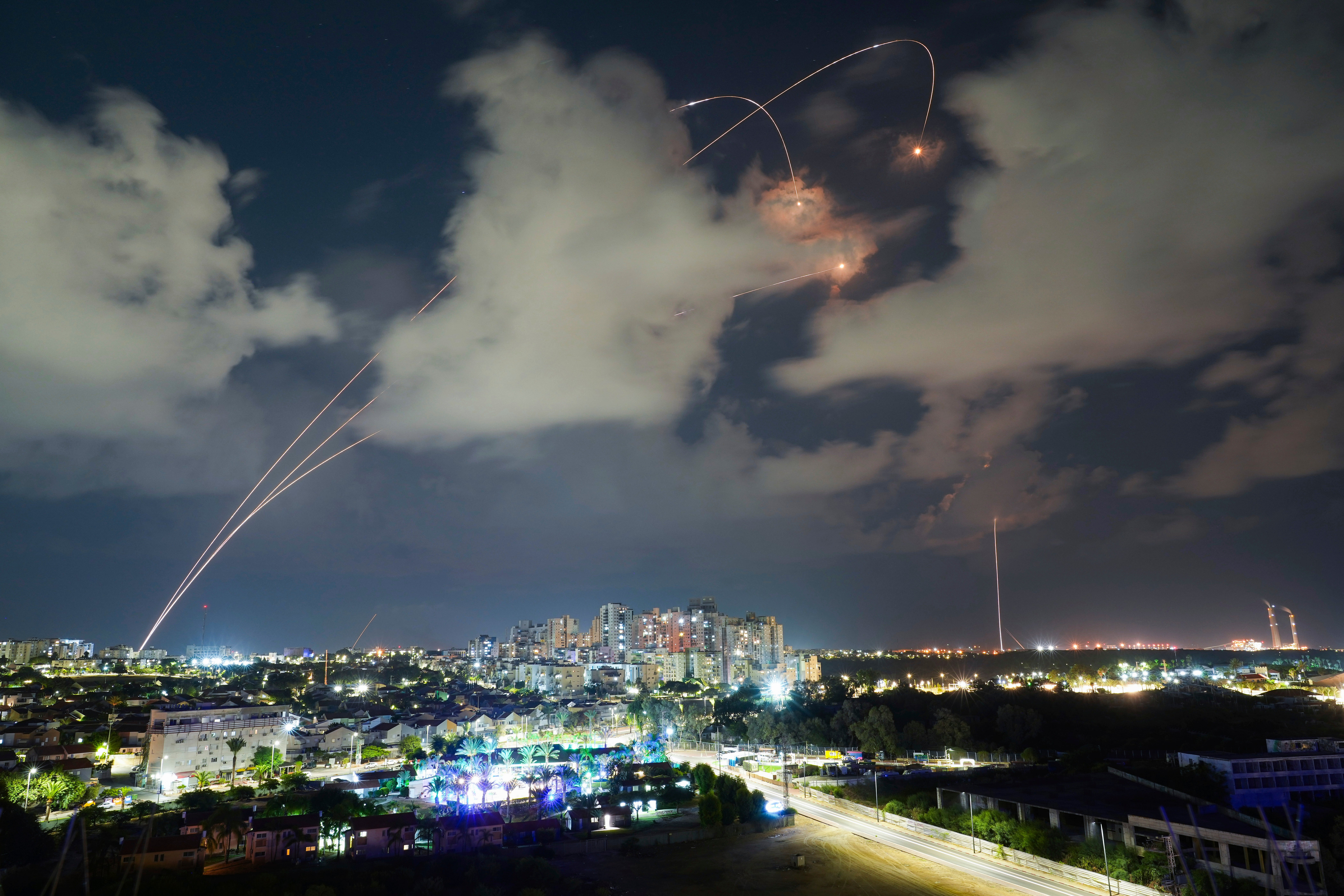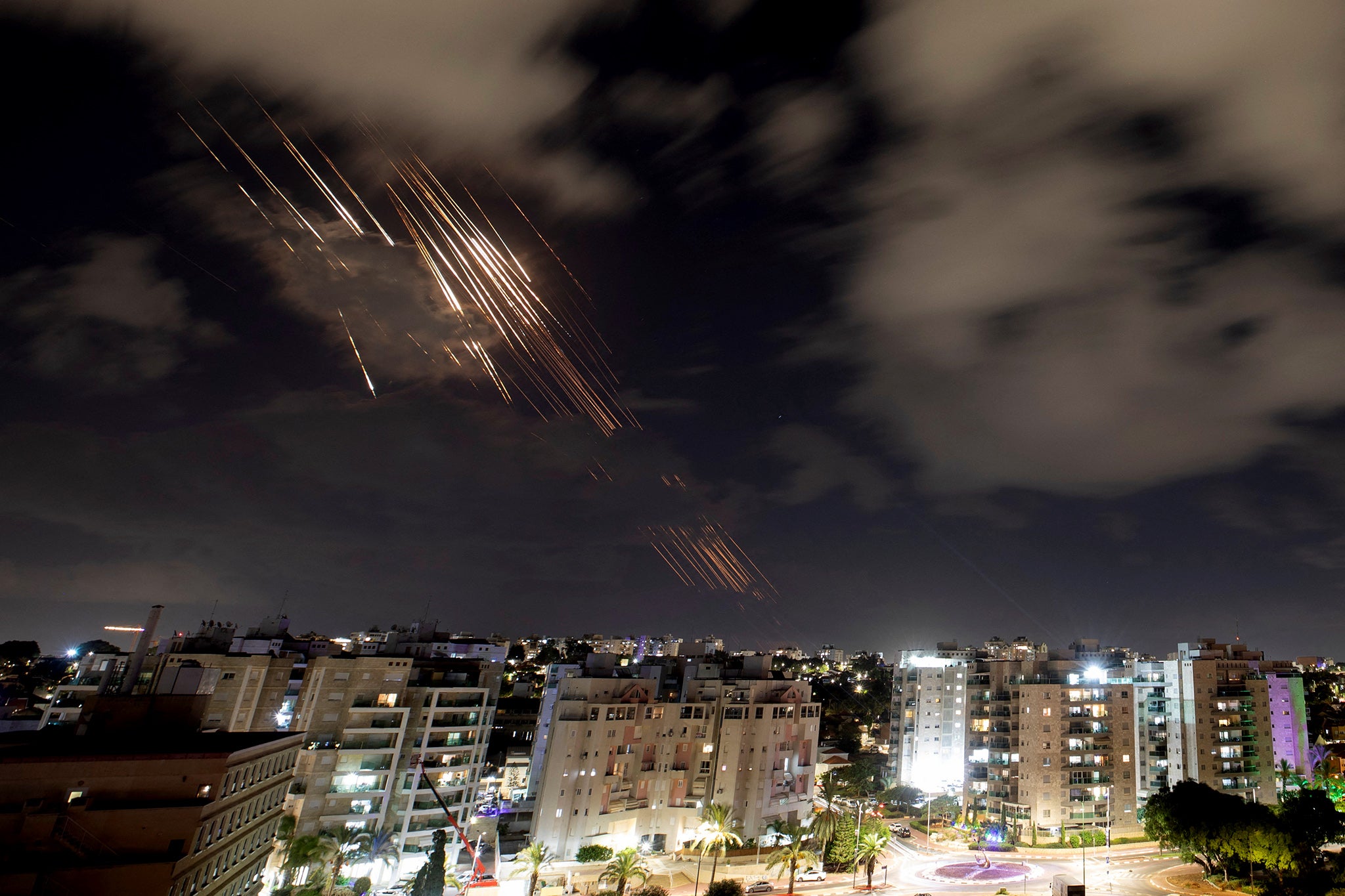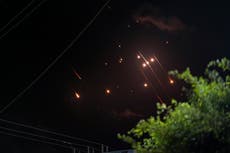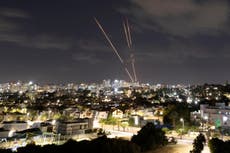How ironclad is Israel’s Iron Dome missile defence system?
Israel's Iron Dome missile defense system enjoys a near-mythical status among Israelis

Since Israel activated the Iron Dome in 2011, the cutting-edge rocket-defense system has intercepted thousands of rockets fired from the Gaza Strip, including on Tuesday night when Iran launched a large scale missile attack.
The system has given residents a sense of security, and Israelis can often be seen watching the projectiles flying through the skies and destroying their targets overhead.
But the current war with Hamas, which has led to direct confrontations with Iran, might be its stiffest challenge yet.

Over the last year, Hamas has fired thousands of rockets toward Israel, according to the Israeli military. That is more than any of the previous four wars fought between Israel and Hamas since the militant group seized power in Gaza in 2007.
On Oct. 7 alone, the first day of fighting, Hamas launched at least 2,000 rockets, according to data from West Point. Lebanon's Hezbollah has also fired hundreds of rockets along Israel's northern front since the fighting began.
Most of the rockets have been intercepted. But some have managed to get through, killing at least 11 people and hitting buildings as far away as Tel Aviv, according to Israeli officials.
On Tuesday evening, Iran launched around 200 missiles in retaliation for Israel’s action in Lebanon, which has seen troops crossing the border in their mission to wipe out militant group Hezbollah.
Sirens blared across the country, and Israelis were ordered to stay in protected areas. An Israeli security official said that in cooperation with the United States, the Israeli Air Force intercepted many of the missiles, though there some direct hits damaging buildings and igniting some fires.
Here is a look at the accomplishments — and limitations — of the Iron Dome.
How does the Iron Dome work?
The Iron Dome is a series of batteries that use radars to detect incoming short-range rockets and intercept them.
Each battery has three or four launchers, 20 missiles, and a radar, according to Raytheon, the U.S. defense giant that co-produces the system with Israel's Rafael Defense Systems.
Once the radar detects a rocket, the system determines whether the rocket is headed toward a populated area.

If so, it launches a missile to intercept and destroy the rocket. If the system determines the rocket is headed to an open area or into the sea, it is allowed to land, thus conserving missiles. According to the military, all interceptions occur in Israeli airspace.
The military declined to comment on how many Iron Dome batteries are currently deployed. But as of 2021, Israel had 10 batteries scattered around the country, each able to defend a territory of 60 square miles (155 square kilometers), according to Raytheon.
How accurate is the Iron Dome?
It is roughly 90% effective, according to Rafael.
But it can get overwhelmed if a mass barrage of rockets is fired, allowing some to slip through. While it has performed well so far, the risk could be raised if Hezbollah enters the war. Hezbollah has an estimated 150,000 rockets and missiles.
How expensive is the system?
Each missile costs an estimated $40,000 to $50,000, according to the Institute for National Security Studies, a Tel Aviv think tank.
The US has invested heavily in the system, helping with development costs and replenishing it during times of fighting.
President Joe Biden has said he will ask Congress for $14.3 billion in military aid for Israel. The majority of that would help with air and missile defense systems, according to the White House.
He said on Tuesday that there was an active discussion ongoing over how Israel would respond to an Iranian ballistic missile attack, and that the consequences for Tehran remain to be seen.



Bookmark popover
Removed from bookmarks